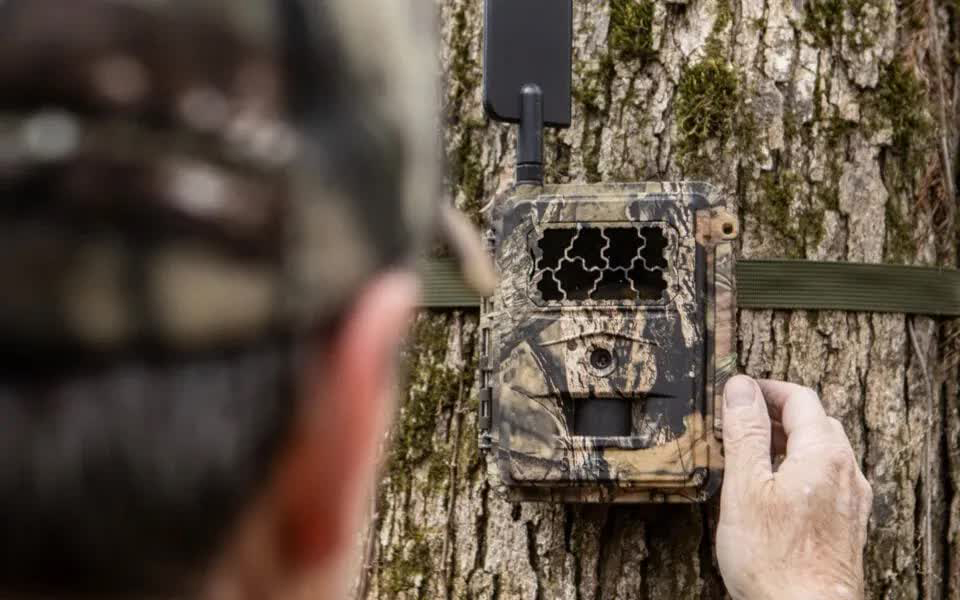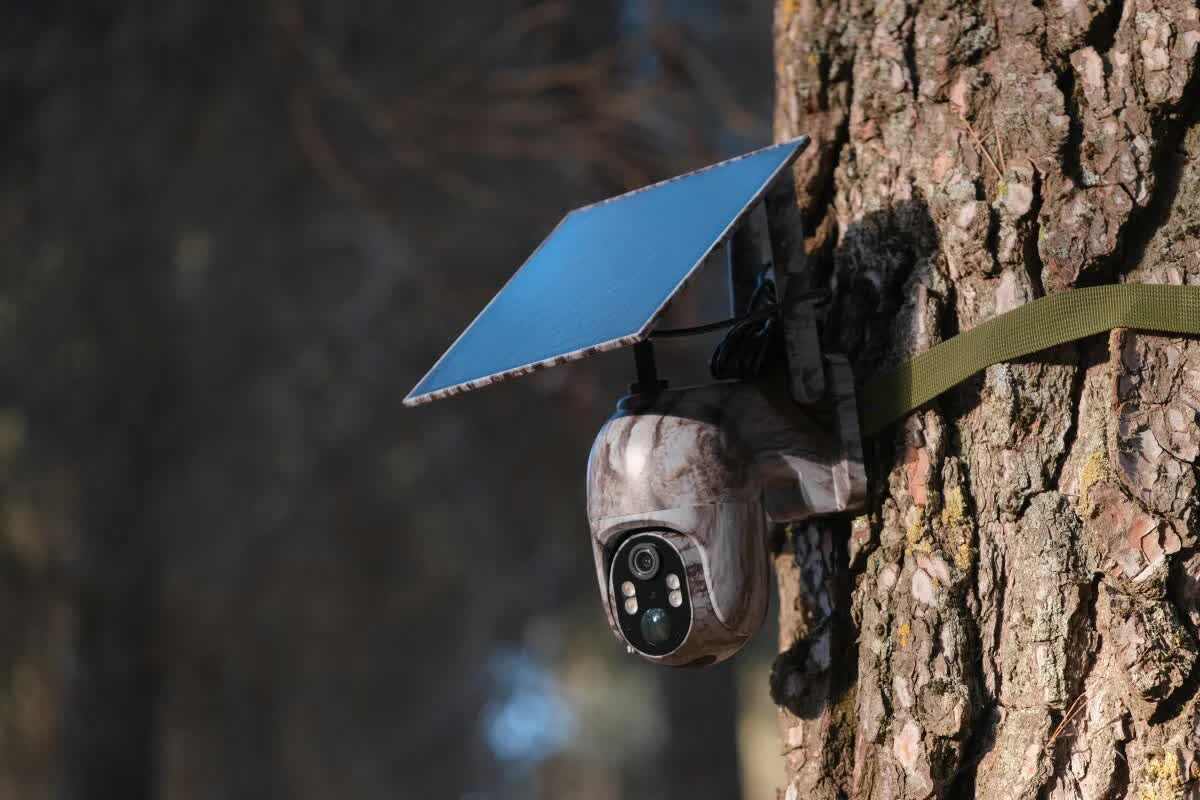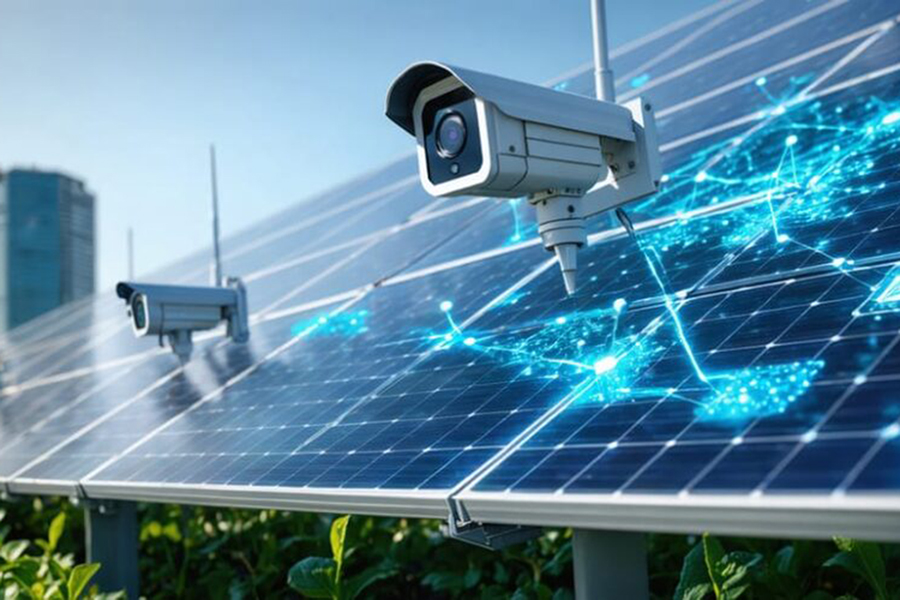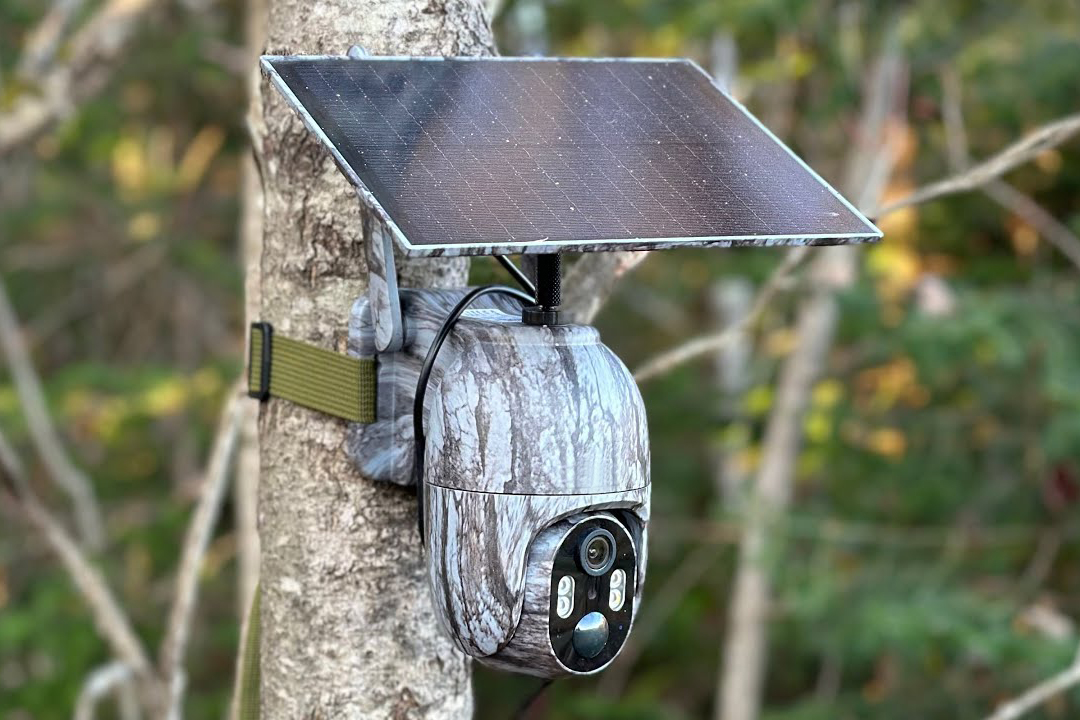Trail Cam Strategies for Cautious Whitetails
Trail Cam Strategies for Cautious Whitetails
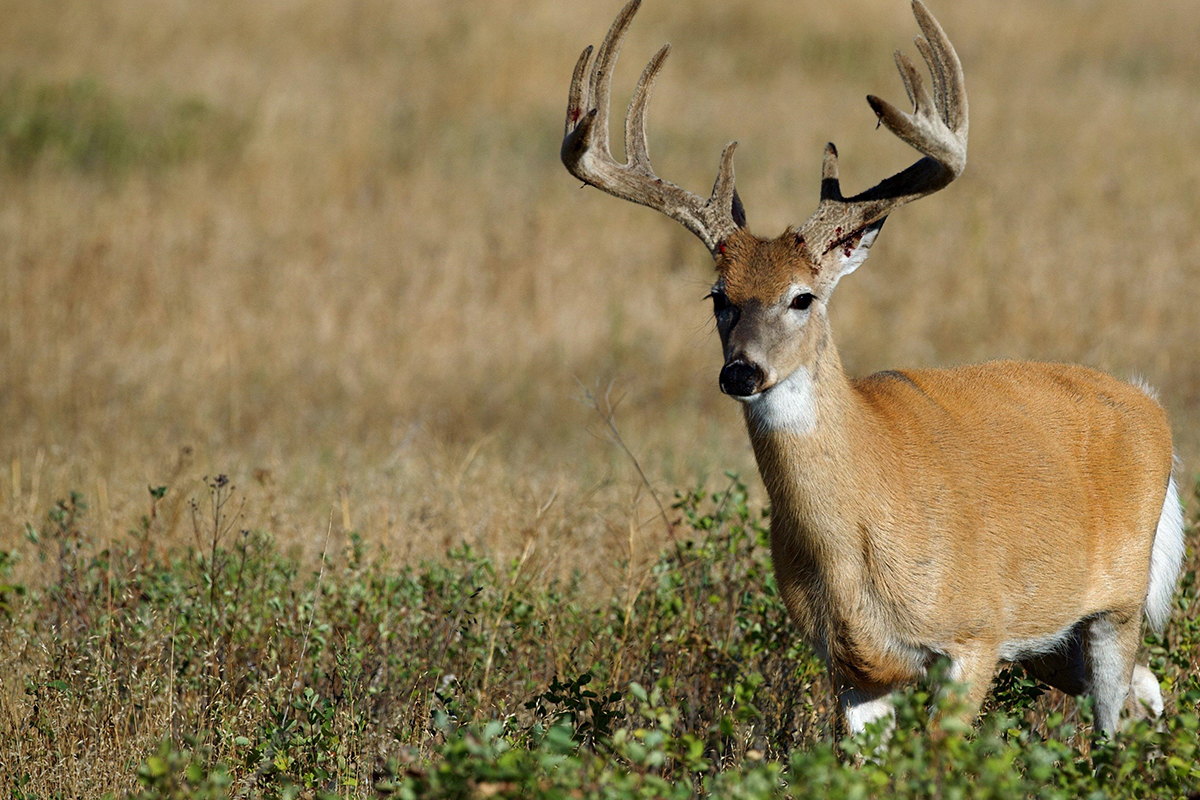
Should you mount your trail cameras high on trees or avoid placing them near your stands? Probably not. Running trail cameras has become a year-round activity for many whitetail hunters. However, there is a prevailing belief that trail cameras can spook deer.
After years of using multiple cameras, I have encountered only a few deer that seemed wary of my backwoods paparazzi setup. Nonetheless, many hunters take steps to conceal their trail cameras from deer. They may mount them high and out of sight or avoid placing them near their stands to prevent altering deer movement. Do these measures work? Not always as effectively as one might think. Here’s how to truly optimize your trail cameras for wary deer.
Hang 'Em High?
Many hunters attempt to hide their trail cameras from nervous whitetails by mounting them high, out of the deer’s line of sight, and angling them downward on a trail or scrape. Josh Mark said, “If I'm in the known core range of a buck, I’m trying to disturb as little as possible, but I don't think deer spook from trail cameras. I think deer spook from the disturbance left behind.”
Mounting your cameras high can be counterproductive from a scouting perspective. This setup reduces the camera’s detection zone and requires deer to walk into a very small area before a photo is taken. Capturing a photo with a trail camera involves several steps: the camera must detect motion, wake up, and then trigger the photo. This process occurs within a brief time frame, and mounting cameras at a flatter and lower angle increases the detection zone. This allows deer to remain in the zone longer, resulting in more photos.
When cameras are aimed downward, moving deer pass through the detection zone quickly. If you mount your cameras high, scrapes are ideal locations, as they focus the detection zone on a small area. In hilly terrain, you can sometimes use the landscape to your advantage, mounting cameras high to capture photos in areas where deer are likely to spend time. Nevertheless, in most situations, mounting trail cameras at standard height is the most effective approach.
Do Cameras Really Scare Deer?
If there is a big buck in your area, it is likely that someone else has captured it on a trail camera. This might not have been the case 10 to 12 years ago when fewer cameras were in use. However, now every deer hunter I know owns some form of trail camera.
When targeting specific bucks, Mark said, “I am more cautious in my approach and attentive to as many details as possible when hanging a camera for a target buck. However, I will still place a camera where I believe I will get the best intel and ultimately the best photos. A newly placed camera might spark initial curiosity in their environment, but I don’t think cameras spook deer to the extent that it affects hunting. Based on my own observations and those of the 40 to 50 members of the Midwest Whitetail team, I cannot conclusively say that many deer are spooked by cameras.”
Ultimately, deer will live and spend time in areas where they feel safe. Even if you believe you have covered all the best trails, deer sometimes travel unusual routes. While trail cameras are reliable, they do not always provide a complete picture. You might think a big buck is avoiding your trail cameras, but there are times when some areas simply have less deer activity. Mark said, “A mature buck’s priorities shift at certain times of the hunting season. If you do not adjust your scouting based on these changes, it may seem as though the deer have suddenly vanished. To capture mature bucks on camera, you must place cameras where deer are present. At certain points throughout the hunting season, your property might not be the best option for them.”
Hide 'Em Low
To make your camera less noticeable to deer or humans, seek good cover closer to the ground. If you have a large stump or several downed trees near a good camera tree, use this to your advantage. Even if deer see the camera hidden among the debris, they might not be able to investigate it further.
Mark prioritizes the right spot, even if the camera is visible, over a less effective location where the camera can be hidden. He mentioned that camera stakes can be valuable tools. “I often use a trail camera stake mount for convenience in positioning the camera, rather than focusing solely on hiding it,” he said.
For example, near fence gaps, you can place cameras on a mounting stake slightly offset and behind the posts. This placement allows the camera to blend with the surrounding fencing material. Mounting trail cameras in areas where deer need to move quickly can also divert their attention from the camera’s presence. Placing a camera where deer jump the fence will not only provide unique photos but also ensure that deer focus more on making the jump than on the camera 15 feet away.
Should You Put Cameras Near Tree Stands?
Would you install a Ring doorbell camera behind your house if you suspected frequent intrusions at your front door? This seems like an obvious choice. Similarly, placing trail cameras near your tree stands is crucial if you want the best hunting intelligence. Mark said, “I position trail cameras next to my stands because understanding what my tree stands are capturing is important. Historical trail camera data has also helped me select stands during different times of the year in areas that might otherwise not have made sense.”
I keep a phone SD card checker in my pack. When I mount a camera near a stand I intend to leave undisturbed, I let it take a few photos of me and then review them to make necessary adjustments. It’s a tedious process but worth it for those high-quality buck photos.
Does Flash Type Matter?
During the 2023 season, I had one of my best years for daylight buck photos, thanks to using several white-flash cameras. Remember, deer have excellent night vision, so the burst from a traditional white flash camera is not as disruptive to them.
Infrared cameras produce a slight red flash. These cameras are the most common and versatile, offering an optimal flash range. Infrared cameras are particularly effective when there are trees in the background of the photo area. The trees reflect the infrared flash, which brightens the photo.
Black flash, or no-glow cameras, do not emit visible light, but their photo quality is not as crisp. No-glow cameras do not stop movement as effectively as infrared or white-flash cameras. However, the advantage is that neither humans nor deer will see any visible flash. There is no definitive answer regarding the best flash type for trail cameras. It ultimately depends on personal preference and the specific conditions where you use your cameras to achieve the best photo quality.
Solar Is the Future
To minimize intrusion and save money in the long run, consider using solar panels for some of your prime hunting locations. This approach helps keep your target deer undisturbed. As Mark mentioned, it is rarely the camera itself that spooks deer, but rather the human intrusion required to maintain it. While standard cameras require SD card checks, even cellular cameras need attention to maintain power. The primary advantage of cellular cameras is avoiding frequent visits to the woods, so investing in solar packs for your best spots is worthwhile. I have a few trail cameras that have been untouched since September 2022 because they are powered by solar packs. Although the initial cost is higher, the savings on batteries make it a worthwhile investment over time.
Wrapping Up
It is easy to overthink trail camera deployment if you believe cameras spook deer. I once heard someone say, “If deer ran from everything they were scared of, they would never stop running.” Deer are likely to become accustomed to and tolerate a certain level of trail camera intrusion. Place your cameras in the best locations for capturing photos and scouting. Utilize natural cover or tools like camera stakes to conceal them as needed, but avoid overanalyzing the process.
